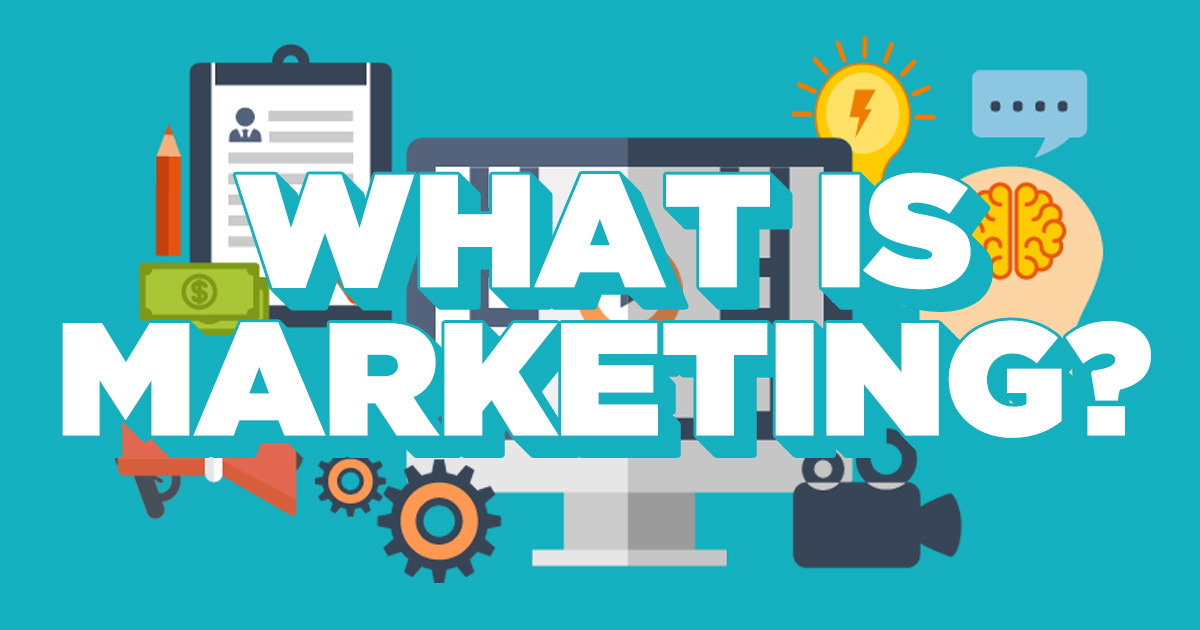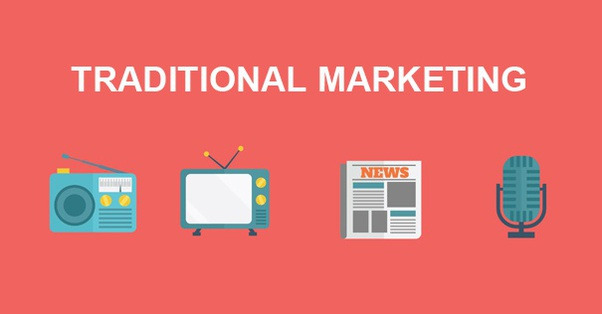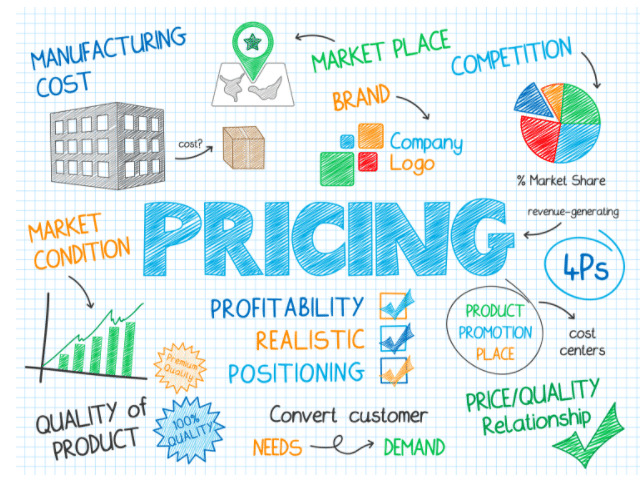7 Functions of Marketing That Make It Quintessential for Business
Welcome to our post about 7 Functions of Marketing That Make It Quintessential for Business.
To be successful, businesses and entrepreneurs need to have a thorough understanding of the market, the needs and desires of customers, and the art of business conduct. Today, businesses must operate in an environment of fierce competition and rapid changes in all aspects and declining customer loyalty.
Therefore, marketing is a powerful weapon for brands to maintain their position in the market. However, not everyone understands the nature of marketing. So what is marketing? What is the function of marketing? This article will help you answer these questions.
What is Marketing?

According to some documents, the term Marketing first appeared in the US in the early 20th century and was included in the English Dictionary in 1944. According to Philip Kotler: “Marketing is the human activity directed at satisfying needs and wants through an exchange process.” Later, he said: “Marketing is a social and managerial process by which individuals and groups obtain what and need through creating, offering, and exchanging products of value with others.”
Marketing has a very strong force on consumers’ beliefs and lifestyles. Therefore, business people find ways to satisfy the desired needs of the consumers, creating products and services at prices that consumers can afford.
In simple terms, Marketing is the strategy and action of business to convey the message to its customers, to increase sales, and to improve brand awareness.
Types of Marketing
Which communication method marketing administrators use depends greatly on the target customers’ behavior.
To make the right choice, they need to conduct various market surveys and studies to determine the exact type of marketing (or different types of marketing) that can be useful in brand development and revenue growth.
Read more:
- 13 Most Effective Types of Digital Marketing
- Types of Distribution Channels
- 5 Types of Market Segmentation with Examples
- 13 Types of Advertising to Promote Products
Here are the most popular types of marketing that managers often choose to reach customers:
Internet Marketing

It is a form of marketing on the internet to promote sales promotion and promote the company’s brand, image, and service to customers. It includes the following types:
1. SEM: Search Engine Marketing
SEM is a combination of many marketing methods to help your website stand at the position you want in search results on the Internet.
SEM includes the following types:
- SEO: Search engine optimization
SEO is understood as a method or collection of methods to optimize text content and website format, making the website more friendly to search engines, in order to improve your website’s ranking to the top 10 on the search tools, like Google, Yahoo, Bing,… when users search for related keywords.
- PPC: Pay per click
This is the type of advertising that when visitors visit the website, the search engine page clicks on your ad (the ad leads to your 1 link), you will have to pay for each click, the more the price is. The higher your ad is, the higher your ad is in the position.
- PPI: Pay Per Inclusion
It is a form that helps websites, especially newly built and put into operation websites, can be searched by search engines and recognized the Website’s existence in the database of the search engine by paying a fee to maintain their Website’s presence in their database.
- SMO: Social Media Optimazation
SMO is a type of marketing through website optimization by linking and connecting with Social Media to share ideas, thoughts, or practical experiences about a certain issue. The commonly used SMO method is RSS feeds, Youtube for sharing videos, or Flickr for sharing photos, albums, etc.
- VSM: Video Search Marketing
A form of advertising through optimal short video clips posted on the website so that targeted customers can easily find it. Currently, Youtube is at the forefront of this service.
2. Email marketing:
A form in which marketers use email, e-books, or e-catalogs to send customers a product introduction mail. Email marketing is intended to motivate and lead customers to purchase for their products.
Learn more about AVADA Email marketing!

3. Social network marketing
Enterprises can fully leverage socail media marketing through social networking platforms like Facebook, Instagram, LinkedIn, TikTok, and more to establish relationships and interact with target customers.
4. Online blog - forum seeding
Online blog, content marketing - forum seeding is a form of marketing, advertising, publishing online content for brands, products, websites, events, and more through tools such as blogs, forums.
5. Online viral marketing
A tactic to encourage an individual to spread a marketing or advertising content to others through the internet, creating a viral spread and effect of a message.
6. Display advertising
A type of advertising in which advertisers convey their message to a target audience through display billboards. Display Advertising can appear in the form of a banner on the Website, billboard in the supermarket, etc.

7. Online PR - Event:
Marketing solutions help businesses’ brands, products, and services reach a wider audience. Similar to traditional PR, but the difference in PR Online is that the marketing content, the stories you create are not displayed on the media, magazines, and the displayed position on today’s online marketing channels.
8. Mobile Marketing:
Mobile marketing is marketing on or with a mobile device, such as a smartphone. Mobile marketing can provide customers with time-sensitive locations and personal information to promote goods, services, and ideas. Mobile media is used as a channel of communication and communication between brands and consumers.
Strategic Marketing

Set of marketing strategies used to hit the marketing focus in the target market. Strategic marketing will include the following:
1. Product strategy
Product strategy is a project’s product decisions made by top management; product strategy determines the success of project objectives and impacts on other decisions.
2. Price strategy
This is one of the most important strategies in Marketing. The goal of businesses here is how to determine the most attractive and competitive price for their product/service in the market.
3. Distribution channel strategy
The establishment of a distribution channel strategy should be achieved in relation to the corporate marketing strategy’s objective. Enterprises with different positions in the market will have different marketing purposes, leading to different distribution strategy implementation.
4. Communication strategy
Communication strategy is the methods and ways to reach target customers, help customers recognize brands, differentiate services and products, and provide information for customers to learn about the product and service, from which customers try products, decide to purchase, and stay loyal to the company’s brands and products
Traditional Marketing

Traditional marketing includes the following activities:
1. Advertising
If marketing is a big chain, then advertising is a small link in that chain. It is considered a marketing strategy, in the form of a paid method, to spread awareness of a service product to the target audience.
May in your interest: Best 13 types of Advertising
2. Public relations
Public relations (PR) is understood as the implementation of specific tasks and strategies to establish a bridge between an organization, business, and the community, customers (current and potential), investors, media and more to shape and affirm the name, brand of the product or company in the whole development process and process.
3. Event organization
Event organization is marketing activities related to educational events, promoting products, or positioning the dominance of products and brands in the market.
4. Promotion
Promotion is an activity of the seller to urge customers to increase the purchase and use of goods and services by the seller by giving customers certain benefits.
5. Market research
Market Research is the activity of gathering information about the target market and analyzing the collected data in order to provide answers to problems arising in business. Market research helps reduce risks and aids founders’ decision-making.
7 Functions of Marketing
We learn a great deal about marketing, its various types, and methods. Yet why do we do marketing? Which is the intended purpose of all marketing strategies? The response to that is obvious at first thought: sell more. Marketing, though, is far more than that. We need to understand seven marketing functions to find out the marketing intent. Such functions describe all aspects which are part of marketing effort. In this section, we’ll look at the seven marketing functions more specifically.
1. Sell

Creating value and providing value for buyers is linked primarily by selling. Sales reflect the change in value ownership and provide customers with the services and goods they want. It includes business-to-business sales to manufacturers, wholesalers, or retailers, and retail sales to consumers.
Sales operations and techniques include identifying customer needs and making them happy through planned, personalized communication. The sales process has a lot to do with the customer’s buying decision and future business development.
Marketing and sales are additional functions. Marketing creates awareness and branding for a product, helping a company’s sales staff or retail staff sell more products.
2. Promotion
Promotions make existing customers and potential customers aware of your product and company. Using marketing strategies, such as advertising, direct marketing, telemarketing, or public relations, you can communicate product benefits and build interests for your products.
Promotion often uses integrated marketing communication (IMC) - which means using different means of communication to convey a brand’s message from the business to the consumer.
Marketers often use promotion in two main ways:
-
Above the line: activities aimed at promoting and building a brand image with a sustainable and long-term purpose through mass media such as TV, Radio, Print & Outdoor Ads. These activities are usually undertaken by the Brand team.
-
Below the line: activities aimed at developing the distribution market, promoting retail, consumption for short-term purposes, and creating direct effects, such as sample delivery, direct marketing, organization events, promotions for consumers, promotions for agents and retailers.
3. Distribution
Distribution determines how and where your customers can buy your products. If you are marketing products to a small number of business customers, you can transact directly with them through the sales team. If the business expands to other regions or countries, it can be more cost-effective to reach customers through local distributors. Consumer product marketing companies are distributed through retail stores or over the Internet.
Distribution Channels are groups of businesses and individuals participating in the process of bringing products or services to customers. Put simply, Distribution is shown through the places that customers go to buy products or services. This could be traditional store affiliates or online sales sites.
There are 4 main types of distribution channels, including Direct Distribution Channels, Indirect Distribution Channels, Wholesale / Retail Distribution Channels, and Electronic Distribution Channels.
4. Market Research

Market research plays a vital role in developing and implementing business strategies to satisfy market needs.
The essence of marketing in the business is to emphasize identity and satisfy customer needs through the communication process. To identify customer needs, thereby building and implementing market research strategies and programs to satisfy those needs, marketing directors need more information about customers, competitors, and other information on the market.
Based on market research on customer information and the factors affecting the buying or not buying behavior of customers, business manufacturers have created products and goods that satisfy customers even if they are the most fastidious.
5. Financing
We all know that finance is largely about having the money needed to pay for establishing and running a business. However, the question arises: Why is it important and a function of marketing?
In fact, finance and marketing have a very close relationship with each other. If one of the two fails to stand up, the other will also collapse. Without marketing, it would be difficult for a company to sell products and bring value to customers, and not have a stable and growing finance.
Many business owners choose to borrow from a bank to start a business. Some customers rely on selling shares or shares of the business. Besides, financing also influences decisions such as whether to provide credit to customers or not. Most retailers allow customers to pay with options like Visa or MasterCard, while others offer their own credit.
In short, successful marketing provides a regular revenue stream to pay for running the business. Marketing programs that increase customer loyalty help ensure long-term sales, while product development programs open up new revenue. Finance also plays a key role in marketing success by offering customers alternative payment methods such as loans, long-term credit, or leasing.
6. Pricing

Price plays an important role in determining market success and profitability. If you market products with multiple competitors, you could face price competition. In that case, you have to target the lowest cost provider in order to be able to bid low and still be profitable. You can overcome low-priced competition by differentiating your products and providing customers with benefits and values that your competitors cannot match.
This is the most important function of the marketing manager to set a price for the product. The product’s price will be influenced by factors such as production costs, margins, competitive product prices, government policies, etc.
A marketer can perform the function of pricing for its goods by designing pricing systems based on product life cycles or stages. Price is the actual value that consumers perceive your product to be. The price of a product should be set in such a way that it is not too high, but at the same time, it must also be profitable enough for the organization.
7. Product Management
Marketing provides valuable input to product and service development. Information about customer needs helps identify features to incorporate in new products and product upgrades. Marketing also identifies opportunities to expand product reach or bring existing products into new areas.
Product Management is an important function in an organization, ensuring priority tasks according to company goals. This is one reason why the PM (product manager)’s position plays an indispensable role in startups and businesses. Product Management helps you to make decisions that match both consumer needs and company goals.
In fact, as more and more companies focus on innovation, the role of Product Management has become a key factor in the success of those organizations.
Related posts:
- What is International Marketing?
- What is an Internal Analysis?
- Marketing Intermediaries Definition
- Why Reorder Point Can Hurt Your Business?
Conclusion
This article is about the 7 Main Functions of Marketing That Every Marketer Needs to Know. By understanding the functions of marketing, you will be able to do better and come up with interesting marketing ideas. Good luck to you!
New Posts

How To Set Up Google Analytics 4 For Your BigCommerce Store






